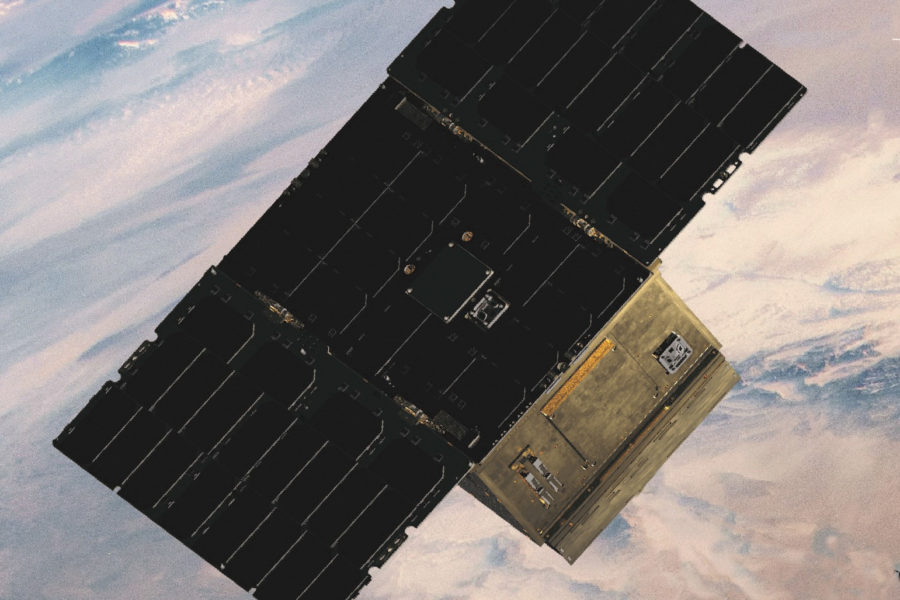A new cubesat built and operated in-house at the Air Force Research Laboratory is set to demonstrate cognitive, beyond-line-of-sight radio networking via satellite while also giving AFRL’s researchers “intimate knowledge” of how the satellite works to apply in the future.
Its name, “Recurve,” refers to a recurve bow because the cubesat demonstrates a new communication technology to provide troops “with another tool in their tool belt (or arrow in their quiver, so to speak),” said Kate Yoshino, Recurve’s program manager.
The group Yoshino works in—the Small Satellite Portfolio within AFRL’s Space Vehicles Directorate—has found that advancing communication technology benefits both the Air Force and the Space Force, she said in a July interview, just as Recurve completed its launch and early operations phase.
“If we can do communication better, that enables is to do all kinds of other things better,” Yoshino said, calling it “one of the backbone technologies … in order for us to achieve other missions as well.”
As many as 50 people at a given time worked on Recurve’s development, but the numbers were shrinking as the process gave way to the ultimate mission. Two people at a time will operate the satellite out of 20 who were trained, with the hope that a degree of ground automation can take away some of the flight burden so the researchers can focus on the experiments.
Recurve’s experiments should show how beyond-line-of-sight radio communications are possible by routing the beams through the satellite.
Yoshino said the cognitive aspect of Recurve’s experiments “is really interesting to a lot of people.” She explained that in conventional communication systems, “you have a set frequency, a set bandwidth, basically a set configuration” to communicate “point to point between two preconfigured, predetermined radios.”
In the Recurve experiment, on the other hand, “the radio itself kind of auto-configures to meet the needs to the operator,” Yoshino said. Since the radios act as nodes in a network, “you jump onto the network, and then the network will route your data to your desired destination.
“And then on top of that, the cognitive piece is that it does change the parameters of the actual physical radio waves to better assist in those needs. So that includes things like, it’ll change the power scaling or change the frequency it’s operating on. And those types of things enable you to more effectively communicate either point to point or with multiple parties.”
As a “truly experimental test asset” within the cubesat portfolio, Recurve’s development emphasized speed over design life of the satellite, Yoshino said. She expected the tests to take six months to a year.
Designing, building, and operating Recurve in-house at AFRL means the researchers “can more pointedly understand how lessons learned can be used,” Yoshino said. “Specifically with communication systems, having such intimate knowledge of the developed vehicle helps us understand kind of how those communication systems can be better proliferated or used further.”
Recurve will also “assess an inherent positioning, navigation and timing capability under various operating and environmental conditions,” according to a news release announcing Recurve’s launch.
Recurve was one of seven experiments air-launched by Virgin Orbit from the Mojave Air and Space Port, Calif., for the Defense Department’s Space Test Program.
